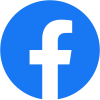Содержание
Investing in your knowledge is one of the most expedient and effective. The acquired skills open the door to new career prospects and income. However, the value of any training must be formed in the mind of a potential client. This task is even more difficult when the deadlines are tight, an economic crisis is on the horizon together with the customer’s desire to save on any non-priority expenses.
In this article, we describe how in 4 weeks we conducted a full-fledged advertising campaign for the workshop and provided the client with valid lead generation, 70% of which made a purchase after the first contact.
About the Project
In March 2020, we worked with a new client – Andrey Krupkin’s Sales Bureau. The company is engaged in consulting in the field of sales: from the turnkey construction of specialized departments to the training of already existing specialists. The Sales Bureau was planning a two-day offline workshop “Effective Sales Manager” and needed active promotion.
The workshop was designed for business owners, executives, managers, and top managers, thus our target audience was determined.
Location of the event – Kiev;
KPI – $ 10 per lead;
The campaign period is 4 weeks.
Work on the Project
The main difficulty of this project was the time constraint. We only had a few days to search for insights, develop a communication strategy, and prepare a creative grid. Besides, in the course of the campaign, all changes were made as quickly as possible, and the materials were prepared, agreed, and changed at the same speed.
Even though we were faced with the task of promoting an educational project, we used the Ad Insight strategy as a base: interacting with the audience within the timeline, building up value, and create an algorithm of a certain number of steps that imply the substitution of messages and creatives. Already in the process, we changed it following the obtained results, but let’s not get ahead of ourselves and start by dividing the campaign into Acquisition and Retargeting.
Acquisition (Conversions Goal)
To attract new users, we created two ad groups: targeting by interests (small and medium-sized business owners, managers, top managers, heads of sales departments) and a lookalike audience, with initial data in the form of existing clients of the “Sales Bureau”. The starting percentage of compliance with the original segment was 2%, and increased as the frequency increased.
For this campaign, the following stages were envisaged:
- Early Sale or Early Birds (registration among the first with the opportunity to purchase a ticket at a reduced cost);
- Brief program of the workshop (for value formation);
- Countdown (3, 2, 1 days before the start of the event).
Retargeting (Reach Goal)
To work with users who were on the landing page but did not buy, we decided to use auto funnels with communication substitution and planned the following stages:
- Invitation to the workshop from Andrey Krupkin (video with the founder);
- Brief program of the workshop;
- Proof of effectiveness using case studies (feedback from companies/managers);
- A reminder that less than a week is left before the event and there are few places left;
- Countdown (3, 2, 1 day to start).
However, pretty quickly we had to reconsider our strategy. The fact is that the client’s sales department processed the incoming leads and almost 70% of them made a purchase after the first contact. In this regard, the stages of warming up audience in the retargeting campaign became ineffective, since everyone who was even slightly interested in the event paid for participation after the first interaction with advertising.
Based onе that, we disabled the retargeting campaign and redirected creatives in favor of Acquisition. Only 3 days before the workshop, we launched an ad reminding that there was less than a week left before the event for the leads, who took a break to “think” after a talk with the sales managers.
Campaign features
At the beginning of the project, we led users from advertising to the landing page, but the price per result was too high and we could not reach the established KPIs. Looking at the situation, we decided to try a different approach and replaced the landing lead with a Facebook form. It worked.
Here we would like to immediately give a small recommendation. Many advertisers don’t want to use the form that Facebook offers, complaining about low lead validity. This is because the system has a peculiarity: for such standard fields as “mail” and “phone”, the network pulls up the information automatically, and the user, when switching over, only needs to press a button to confirm. To exclude unwanted leads (not relevant to our target audience and not interested in the event), we added additional custom fields, such as the position and the number of people in the sales department.
Even though we launched completely different ad formats from video to a carousel, the most successful were single images, in which Andrey Krupkin himself was present, or illustrations with elements familiar to this niche (growth graphs, arrows, diagrams, etc.).
When it comes to placement, there was no significant difference between Facebook and Instagram ad performance. The indicators for both networks were almost the same.
If we talk about messages, here we focused on the rational component. The most successful messages were those that offered to solve the problems of the sales departments, or to conduct an audit and improve the results if there were no difficulties.
To increase the effectiveness of advertising and the quality of leads, we consulted with the client regularly. It was important for us to get feedback from the managers of his sales department about the quality of the received leads. This made it possible to understand how the advertising was coping with its goals, and promptly make changes if necessary.
Initially, Andrey Krupkin’s Sales Bureau planned to hold the event offline, but after the quarantine was extended, it quickly changed its plans and changed the format to online. In this regard, a week before the start, we also expanded the geography of targeting, replacing Kiev to all of Ukraine. At the same time, the validity of leads slightly decreased, but more than 50% of contacts continued to close in sales.
If we had more time, we would also work with wide audiences, using trained ad groups for this, but in this case, we did not want to waste resources for conducting tests. However, if your case permits, do not miss this opportunity.
Results:
As a result of the campaign, we got the following results:
Number of leads – 221
Coverage – 223 921
Average cost per lead acquisition – $ 8.2
CPM (Acquisition) – $ 3.44
CPM (Retention) – $ 9.48
CPC – $ 0.74
Conclusions
Even if you need to launch an advertisement for an educational project, try to look at the problem from different angles, find analogies, suitable strategies and hidden opportunities. Standard constructions do not always work, the structures of advertising campaigns can fall apart, but this is not a reason to despair, but only the need to revise the strategy and make changes. This is evidenced by our situation with retargeting creatives, which turned out to be completely useless. We were able to find a worthy use for them in a campaign to attract a cold audience.
The tight deadline for an advertising campaign is not an obstacle to its effectiveness. The copywriter, targeting specialist, designer and client should become one team, and changes in conditions and external factors, such as quarantine, should not radically affect performance. The main thing is to quickly and orderly start preparing and launching, harmoniously making changes in the process and learning how to quickly respond to changes. And if you need help promoting an online or offline event, you can always contact us.
Subscribe to our Messenger bot and Telegram channel to receive the most useful advertising content on social networks.
If you have found a spelling error, please, notify us by selecting that text and pressing Ctrl+Enter.











